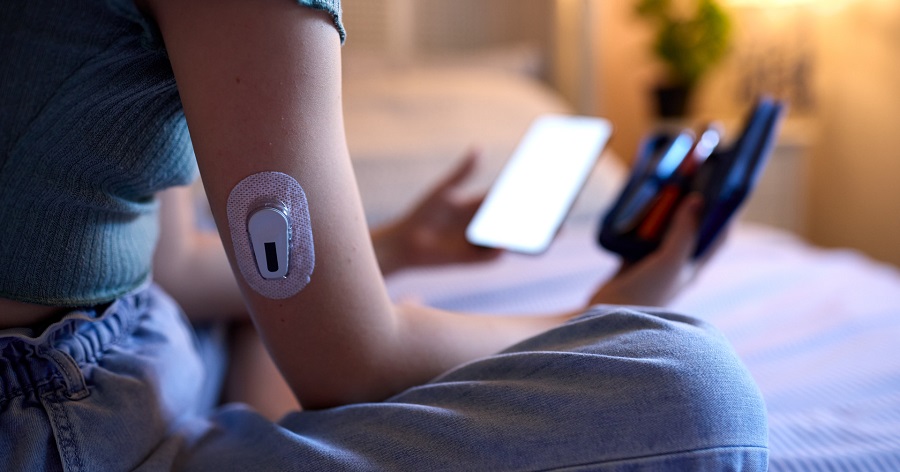Technology has reshaped how people manage diabetes, from smartphone-linked monitors to platforms that provide real-time guidance. Yet the question remains: is everyone benefiting equally? Gaps in access, broadband, and cultural fit still leave many behind. Joe Kiani, Masimo and Willow Laboratories founder, has long emphasized the need for prevention that works in everyday life, not only in clinics. His latest initiative, Nutu™, applies real-time data and behavioral insights to support sustainable change, recognizing that tools only succeed when designed for all users.
Progress depends on narrowing the gap between innovation and accessibility. That means designing with empathy, reducing barriers to entry, and making usability a core feature of prevention efforts.
What the Divide Looks Like in Practice
Digital platforms have helped millions track their health, improve their diet, or access personalized coaching. Yet these tools are often underused in the populations most affected by Type 2 diabetes. Rural residents, older adults, low-income individuals, and some ethnic minority groups face unique challenges when trying to access or benefit from digital care.
Barriers range from unreliable internet access and limited device availability to apps that rely on language or interfaces that do not reflect the user’s background. Even when someone owns a smartphone, they may lack the digital literacy to navigate a health platform designed without them in mind. These gaps limit both engagement and outcomes. If a tool works only for users already in high-tech environments, it risks leaving behind the very people who could benefit most.
Why Inclusive Design Matters
Closing the gap begins with how tools are designed. Platforms that prioritize inclusive design are more likely to reach diverse users. That includes clear content, adaptable interfaces, multiple languages, and culturally relevant coaching.
It also means making onboarding simple. Complex health apps that require extensive setup, device syncing, or long questionnaires often drive users away early. Platforms that reduce friction by gathering passive data, using plain language, and offering immediate value with minimal effort are more likely to keep people engaged. When the first interaction feels manageable, users return. Repeated engagement is what leads to behavior change.
Behavioral Tools Must Reflect Real Life
Many diabetes risk reduction programs expect people to change too much at once, from logging meals and counting steps to tracking sleep and stress. For someone balancing work, family, and financial pressure, those expectations can feel unrealistic.
Digital platforms that apply behavioral science offer a more practical path. They suggest small, manageable changes based on each person’s habits and environment. If someone regularly skips breakfast and reports low energy, the system might recommend a simple snack before work. If sleep is disrupted, a short wind-down routine could be introduced. These suggestions adjust to real circumstances, building trust and helping users form habits that last even when life is unpredictable.
Joe Kiani, Masimo founder, notes, “What’s unique about Nutu is that it’s meant to create small changes that will lead to sustainable, lifelong positive results.” The focus is on making prevention manageable by aligning with daily routines instead of demanding drastic change. When tools emphasize usability and deliver steady, actionable guidance, they remain accessible even for people with limited time, lower confidence with technology, or fewer resources. Flexibility of this kind is essential for closing the digital divide and ensuring more people benefit from prevention.
Equitable Access Supports Better Outcomes and Lower Costs
Gaps in access to care are not only social challenges but financial ones. When people in vulnerable communities do not receive consistent support, they are more likely to face complications that lead to costly emergency visits and hospital stays. For insurers and health systems, improving access to prevention tools is as much about sustainability as it is about fairness.
Digital platforms that work across a range of devices, provide real-time feedback, and connect with community health resources can help extend care beyond the clinic. They do not replace providers but strengthen their impact between visits and in areas where specialists are scarce. The real priority is usability. Tools must work without high-speed internet, the latest phones, or multiple logins. Simple design encourages people to keep using them, ongoing use makes prevention possible, and prevention is what ultimately lowers costs.
Supporting Clinicians with Better Context
Providers often see only snapshots of a patient’s health during short appointments, which can make it hard to give tailored advice. Much of what shapes outcomes happens between those visits, in daily routines that go unrecorded. Digital tools that gather behavior and lifestyle patterns help close this gap by offering a clearer view of what patients are experiencing.
With this added context, clinicians can move past general reminders and focus on what matters most. If a trend shows ongoing stress and disrupted sleep, the provider can recommend targeted strategies instead of broad lifestyle advice. When patients see that their real experiences are shaping the conversation, they are more likely to feel understood and to follow through. This kind of collaboration leads to better care while also reducing unnecessary visits and tests.
A Shared Responsibility
Closing the digital divide in diabetes care is not the job of a single group. It requires cooperation among technology companies, insurers, healthcare providers, public health agencies, and employers. Expanding broadband access, ensuring affordable devices, and offering training for both patients and community health workers are practical steps that can widen the reach of digital support.
Platforms like Nutu rely on clear instructions, adaptable features, and culturally relevant guidance to help ensure that people from different backgrounds feel included. When tools are easy to start using and provide value right away, they lower the barriers that often keep those at highest risk from engaging.
This kind of collaboration does more than close technical gaps. It helps shift the focus of care toward prevention that feels accessible and consistent in daily life. Each step taken to broaden access extends the reach of risk reduction, giving more people the chance to stay healthier for longer and reducing the need for costly interventions down the line.

